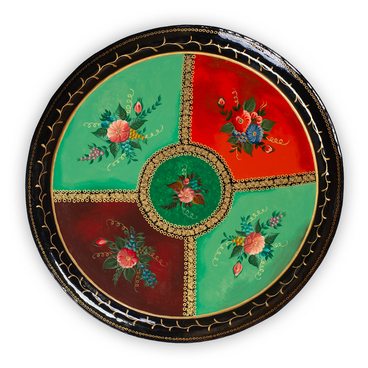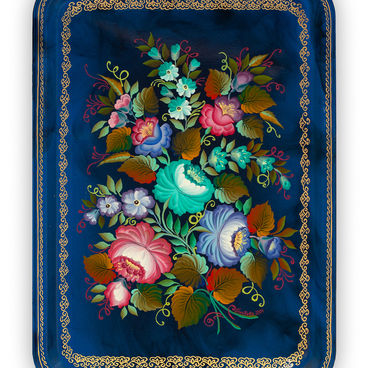This exhibit is an item of decorative and applied art. It is a riveted rectangular tray with an openwork pierced rim. In the 18th–19th centuries, there were two main methods of tray production in Russia — riveting and forging. In the second half of the 18th century, cold riveting became more popular. These trays were assembled from separate components.
There could be up to ten parts: the base, the pierced rims decorated using chisels, and the handles. The base of the tray was also called “the mirror” due to its smooth surface. The rims and the base were joined together with metal fasteners using the cold riveting technique. The connection was carefully concealed, giving the product a smooth and unified look.
The rivets were produced using specialized dies. The shaped handles were forged separately. The displayed tray does not have handles which suggests that it might not have been completed. A tray was not fully functional without the handles.
Traditionally, craftsmen would attach the handles using a hatchet-type soldering iron. The product was heated using external sources, usually a fire. Sometimes, metal beads were also soldered to the edge of the tray. This decorative technique was known as a “beaded border”.
On the back of the tray, metal strips, or “legs”, were attached diagonally to hold the entire structure. These strips served as stiffening ribs, making the tray more durable. The riveted trays were available in various shapes, including rectangular, oval, and octagonal.
Unlike forged trays with their smooth contours, riveted trays always had a clearly defined geometric shape. The exhibit from the Nizhny Tagil Museum could be intended for a serving tray or as a painting surface. In the latter case, the tray could feature a painting, most likely, a genre scene. Trays with paintings became widely popular in the houses of aristocrats in the 18th century. They featured scenes from the artworks of famous painters.


